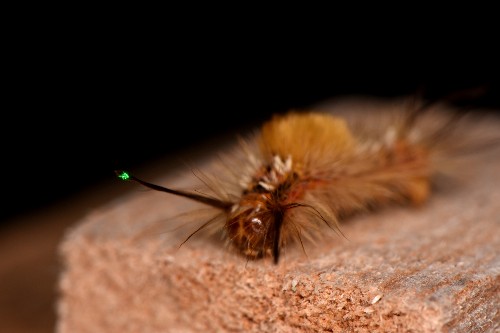The paper, titled ‘Prey can detect predators via electroreception in air’ was selected from hundreds of articles to win PNAS’s Cozzarelli Prize for the best paper in the ‘Applied Biological, Agricultural, and Environmental Sciences’ category.
The research, which was led by Dr Sam England, who completed his PhD at Bristol in 2023, and Professor Daniel Robert, Professor of Bionanoscience at the University of Bristol, showed that caterpillars respond defensively to electric fields similar to those emitted by their natural predators.
In the study, Dr England and Professor Robert showed that caterpillar hairs move in response to electric fields and are most sensitive to the frequencies that correspond to the wingbeats frequencies of other insects, indicating that their hairs could be tuned to pick up the electrical cues of their predators.
These findings are the first example of static electricity being used as a sensory cue in a predator-prey interaction.
On learning of winning the Cozzarelli Prize, Dr England said: : “I’m absolutely buzzing for our paper to have won this prize. It’s a massive honour, and now I surely need to make some tiny medals for the caterpillars and wasps too!”
The researchers wanted to investigate whether a prey animal, like a caterpillar, could detect its predators by feeling the electric field coming off of them. They calculated how strong the electric field would be when a wasp approaches a caterpillar on a plant, and tested whether a caterpillars defensive response was triggered by the sensory hairs detecting the electricity.
The results of the study are concerning because they show that caterpillars are also sensitive to the frequencies of electric field emitted by powerlines and other electronic equipment. This means that humans may be hindering the ability of animals to detect their predators by filling the environment with electrical ‘noise’.
Almost all animals on land appear to accumulate static charge meaning this static electric sense may be widespread, and the discovery that static electricity plays a role in these ecological interactions stands to open up entirely new dimensions to our understanding of how animals sense each other, and more generally how and why they evolve in certain ways.
Paper
‘Prey can detect predators via electroreception in air’ by Sam J. England and Daniel Robert in PNAS [open access]
.jpg)
